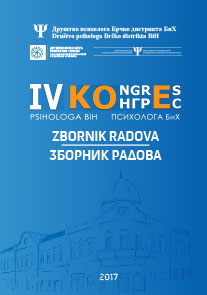Šta je novo u DSM-5?
What is new in DSM-5?
Author(s): Sabina AlispahićSubject(s): Gender Studies, Cognitive Psychology, Neuropsychology, Clinical psychology, Health and medicine and law, Family and social welfare
Published by: Logotip
Keywords: DSM-5; changes in the diagnosis and classification of psychological disorders;
Summary/Abstract: The fifth edition of the Diagnostic and Statistical Manual of psychological disorders (DSM-5) was published in May, 2013 with a series of changes in the classification and description of psychological disorders. The aim of this paper is to present the main changes in the diagnosis and classification of psychological disorders according to DSM-5. The first and most obvious change in the new version is that the Roman number V is replaced by the Arabic number 5, which reflects the future intention of the American Psychiatric Association for manual to be as responsive to supplements of the information based on the results of new research (revisions would be called DSM 5.1., DSM 5.2., etc.), until the release of a new version of the manual. Axle system (axes I, II, III, IV, and V) from previous editions are replaced by organising DSM-5 by lifelong development, so that the disorders with occurrence in childhood are placed at the beginning of manual, while disorders typical for older age are placed at the end of the manual. Some of the major changes in the DSM-5 are: the integration of the results of the latest research on the genetic and neuropsychological factors related to psychological disorders; integration of autistic disorder, asperger’s disorder and pervasive developmental disorder in one category “autistic spectrum disorder”; separation of anxiety and depressive disorders in the new diagnostic categories; categories supstance use and addictions have been replaced by the term “substance use disorder”. Categorical approach to personality disorders remained unchanged, but alternative, dimensional model is offered too, which separates the assessment of interpersonal functioning and expression of pathological personality traits for the six specific disorders. DSM-5 has also introduced a new category of disorders such as disturbances disruptive mood dysregulation, trichotillomania, excoriation and premenstrual dysphoric disorder. It can be concluded that the new changes in the diagnosis and classification of psychological disorders will have a significant impact on researchers, clinicians, the pharmaceutical industry, legal systems, and the general public.
Journal: Zbornik radova Kongresa psihologa Bosne i Hercegovine
- Issue Year: 2017
- Issue No: 4
- Page Range: 113-123
- Page Count: 11
- Language: Bosnian

